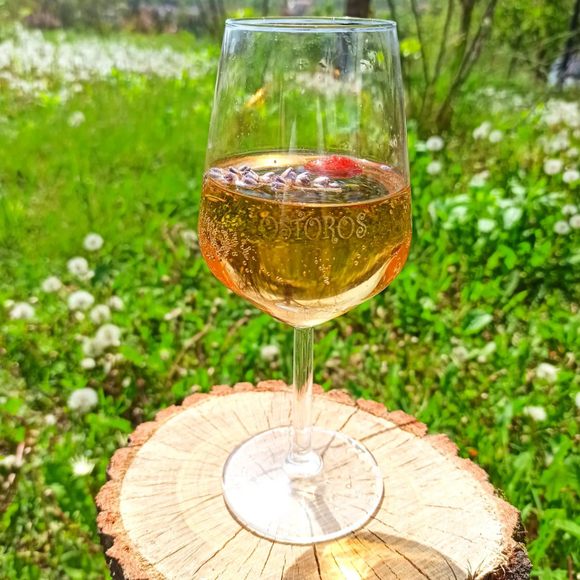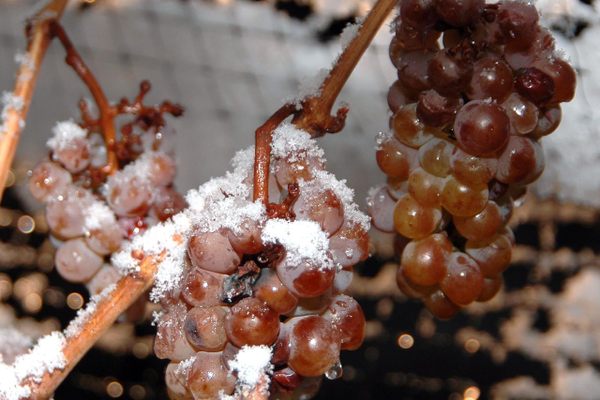Italy may have the Aperol spritz but Hungary has fröccs. Fröccs (roughly pronounced “frurtch”) is a wine and soda water drink (it’s always soda water, never fizzy mineral water) that’s a summertime rite of passage in Budapest’s ruin bars, café patios, and on many an apartment balcony or roof terrace. (Many people even have soda water delivered to their homes, à la the milkman of yore.)
Drinking fröccs is a codified business. When it comes to ordering your glass, you have to decide if you are a “Mayor” (Polgármester), “Railway Watchman’s Mother-in-Law” (Bakteranyós), or a “Landlord” (Háziúr), to name just a few variations. The names represent the ratio of wine to soda water, measured in deciliters. While orders like the Mayor and Landlord correspond to respective ratios of 6:4 and 4:1, the list starts with the straightforward “small” (Kis) or “big” (Nagy) fröccs, which call for ratios of 1:1 or 2:1 wine to soda water. For anyone wanting to truly indulge, however, the king of all fröccs is the Krúdy-fröccs (named after the oenophile writer Gyula Krúdy): 9 deciliters wine to 1 deciliter soda water.
The origin of fröccs dates back to 1842. It’s credited to Ányos Jedlik, a Benedictine monk, scientist, and inventor who came up with a siphon process to bottle industrial-scale soda water. According to the oft-told tale, fröccs was born when Jedlik was demonstrating how to use his siphon at a dinner party when he spritzed soda water into his glass of wine. Apparently, the Hungarian poet Mihály Vörösmarty also happened to be present and penned an ode to the resulting tipple:
Upward rise within the cup, Pearly beads,Naught can stop it, as each globeUpward speeds;Skyward let all things ascendPure and white. Leaving on the earth beneath, Dross and blight.
Fröccs’s popularity boomed during Hungary’s Socialist era because, as locals like to say, the period’s wine was so bad that it needed to be diluted. Although there are excellent Hungarian wines today, fröccs remains popular, especially as a prescription for cooling off in Budapest’s sweltering summer heat and humidity. (It’s drunk all year round, but summer is definitely fröccs season.) Many drinkers swear that adding soda water doesn’t negatively alter a good wine but, to the contrary, its bubbles bring out the wine’s subtle flavors.
White wine is the standard choice for fröccs, though more recently rosé has become popular at music festivals and beaches, especially among a younger crowd. Sometimes red is used, but that’s definitely frowned upon by fröccs purists. “They don’t make fröccs from red wine in Budapest,” says Dániel Ercsey, the editor-in-chief of WineSofa and coauthor of The Great Hungarian Wine Atlas. “It used to be common knowledge that the wine in a fröccs was Olaszrizling [a white grape]. Nowadays, this is no longer the case, with rosé fröccs, mainly from Kékfrankos [a red grape].”
As for the names of the drinks, Ercsey says they speak to Hungarian humor and are always changing. Any bartender will know some of the classics like large or small fröccs, but it’s hard to keep up with new additions to the vernacular. “One exception is the Puskás fröccs,” Ercsey says, which “refers to the famous football match in the 1950s when the Hungarians beat the English 6 to 3. That score is the wine-to-soda ratio.”
Some but not all of the wine bars and restaurants serving fröccs will translate the names so non-Hungarian speakers can be in on the joke. But if they don’t, most go out of their way to offer cute illustrations of their fröccs that display the ratios. And at restaurants you’ll often see a canister of soda water on each table so you can create your own fröccs with your wine order. As they say in Hungary: “Where there is wine, there is fröccs.”
Where to Try It
-
Kőleves Kert Website
Kazinczy utca 37-39, Budapest, 1075, HungaryAn outdoor summertime bar in a garden next to the popular, if touristy, Kőleves restaurant in Budapest’s old Jewish Quarter.
-
Bar Pontoon
Vigadó 1/A kikötő, Budapest, 1051, HungaryThis summertime bar and outdoor concert venue along the Danube is a locally loved spot for fröccs and music.
Written By
k karenburshteinSources
- www.eater.com/2019/8/15/20757518/fizzy-froccs-hungarian-summer-drink-wine-spritzer
- www.offbeatbudapest.com/hungarian-wines/beginners-guide/
- www.budapestdaytrips.com/a-double-invention-from-hungary-the-froccs-the-fruch/
- pubcrawl-budapest.com/froccs-everything-need-know/
- www.vice.com/en/article/gvmdwy/tasting-communism-in-the-vineyards-of-hungary0
- welovebudapest.com/en/article/2014/9/9/froccs-the-summertime-drink-that-s-refreshing-all-year















